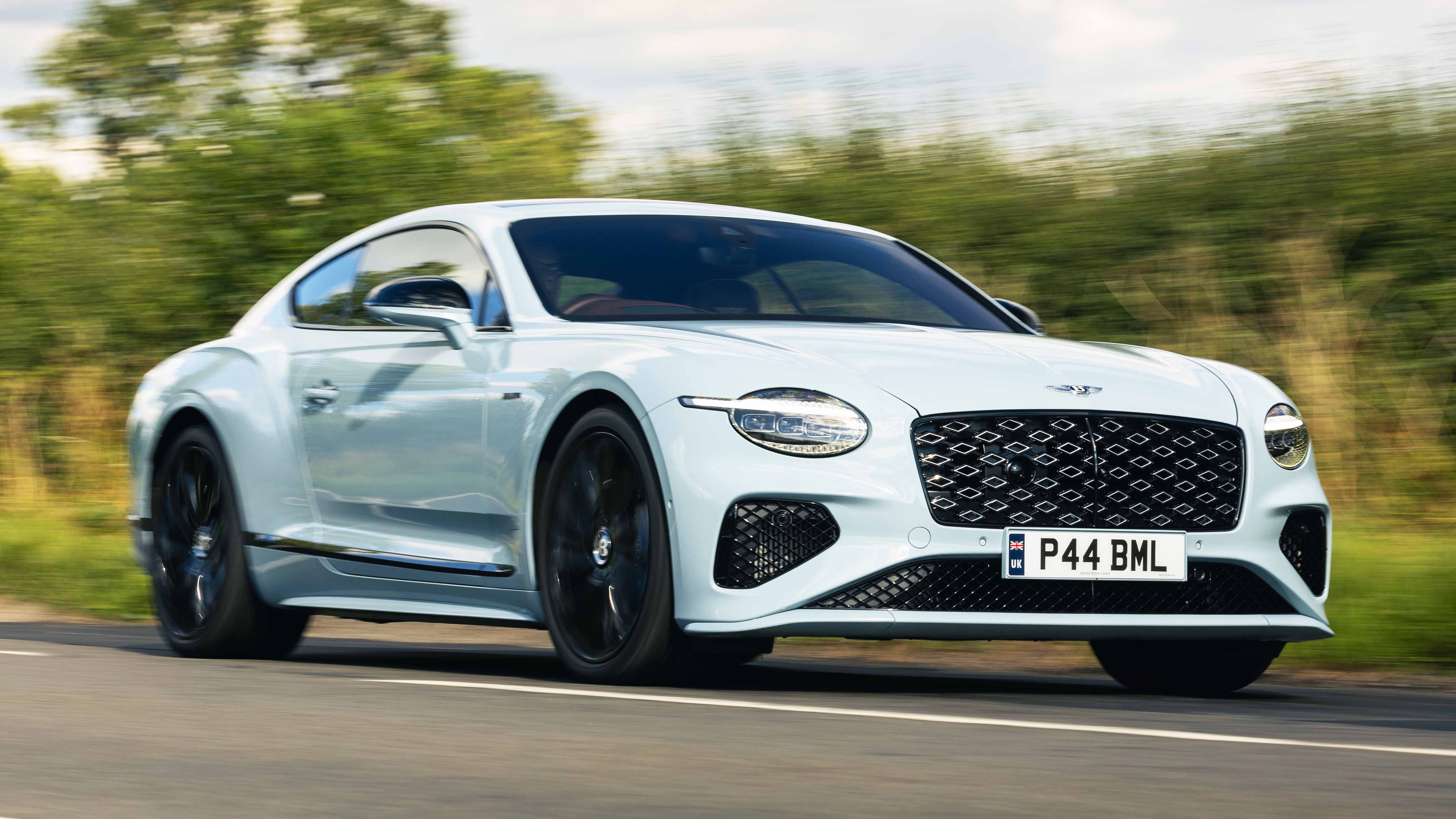
Bentley Continental GT Mulliner - long-term review
£254,200 / as tested £289,900 / PCM £5,077
SPEC HIGHLIGHTS
- SPEC
Bentley Continental GT Mulliner
- ENGINE
3996cc
- BHP
771.1bhp
- 0-62
3.2s
Has a plug-in hybrid drivetrain made the 2.5-tonne Bentley Conti GT use less fuel?
I wasn’t planning to draw any conclusions about the Bentley’s hybrid drivetrain this early, but the Continental GT had an extremely busy first month at TG, covering 1,800 miles in its first four weeks on our Garage fleet. So let’s have a sitrep. So far, it’s using less fuel than the BMW M2 I ran last year.
Of course it is – it can travel a real-world 50 miles on electric power and that head-start averages out the V8’s fuel appetite very healthily. One month in and it’s settled at 34 miles per gallon.
The W12-powered Conti GT we ran back in 2020 averaged 24.4mpg, but that has four more cylinders. Perhaps a fairer comparison is the Audi RS6 dailyed by Ollie Marriage in 2020 – replete with a similar 4.0-litre bi-turbo V8. It too was four-wheel drive, and weighed in the wrong side of two tonnes (though several hundred kilos less than the Bentley.) It languished around 19mpg with a best of 23mpg, so whichever way you cut it, adding PHEV ability to the Bentley has added a real-world efficiency advantage.
But I would say that, because I like plug-in hybrids. Some disagree. I understand why. Yes, they’re heavy. Yes, it’s selfish to own one car with two engines. And yes, I understand all the pitfalls and tripwires that ‘if you are using the EV bit often enough, you might as well just have an EV'. The detractors argue PHEVs only suit a very specific lifestyle.
Well, it appears that’s my life. Silent early morning getaways don’t wake the neighbours. Quick dashes into my local Georgian market town with its narrow streets and medieval parking spaces are accomplished without having to rouse the engine. But I also spend many hours of my week on motorways, where EVs can’t re-gen and chew through range like a labrador dispatching cuddly toys – I know this, having just spent seven months with an MG Cyberster.
So, I like PHEVs in general. I like the Bentley’s drivetrain in particular because it’s clever. The handover between EV and V8 power is utterly seamless, even when the engine and transmission are cold, which often catches hybrids out. The old Conti struggled with slightly lumpy gearchanges – that’s gone. My colleague Greg Potts borrowed the car for a few days and fell out of it overcome with praise for ‘the smoothest gearchanges of any car ever'. And he’s right.
Like all plug-in hybrids, for WLTP-test reasons it always begins in EV mode. I don’t mind that, but it’s annoying when it keeps on using EV mode to accelerate onto a motorway, which is really where the V8 ought to take over. Two presses of the ‘EV’ button click it through to Hybrid mode, which sorts this, and has become my commute default. Though, the other day I drove the new BMW M5 and noticed a sub-sub-sub-menu option for starting the car without defaulting to EV. A useful trick.
So far, one of the car’s touchscreen graphs tells me I’ve spent 31 per cent of my driving time in all-EV mode. I’m not sure all this data-harvesting geekery is especially ‘Bentley’, but there’s no doubt this plug-in side makes a very showy, flashy car that bit more in-step with the times.
Over the next few months I’ll explore more of how to get the best from the hybrid system. I’m interested to find out how intelligent the powertrain is when interacting with the sat-nav to best use electric and petrol energy over the duration of a journey. And having found the e-range is a real-world 50-52 miles if used in appropriately urban settings, we’ll unearth out how dramatically that drops when the temperatures get autumnal.
Certainly, a strong start from the Bentley. It’s an indulgent experience to walk up to, and to climb aboard, but not profligate to run. It’s like going for a Michelin star five-course meal and finding out it’s completely calorie-free.
Featured

Trending this week
- Car Review
Ferrari Amalfi
- Long Term Review
Is the Suzuki Swift still the best small car money can buy?






